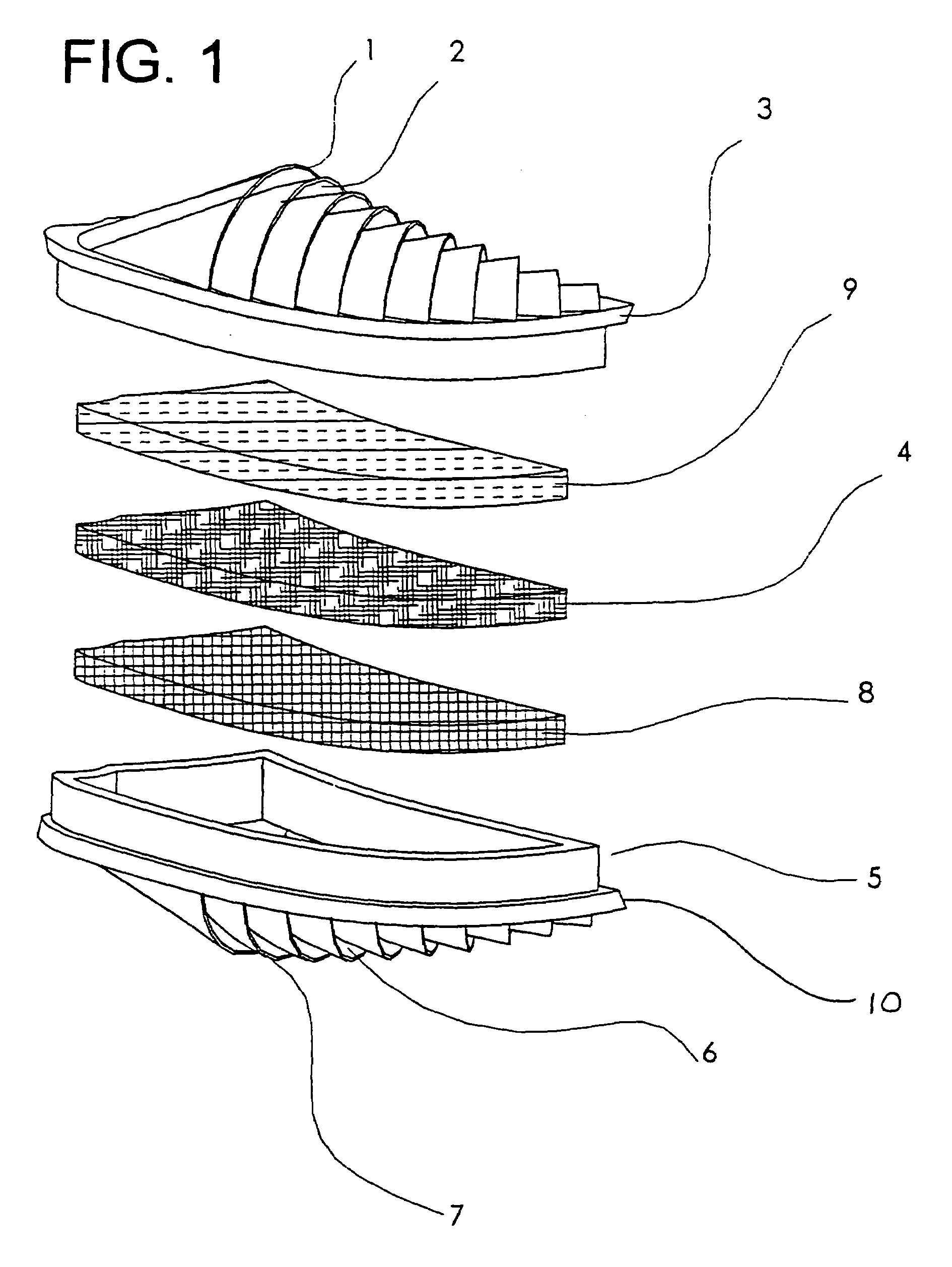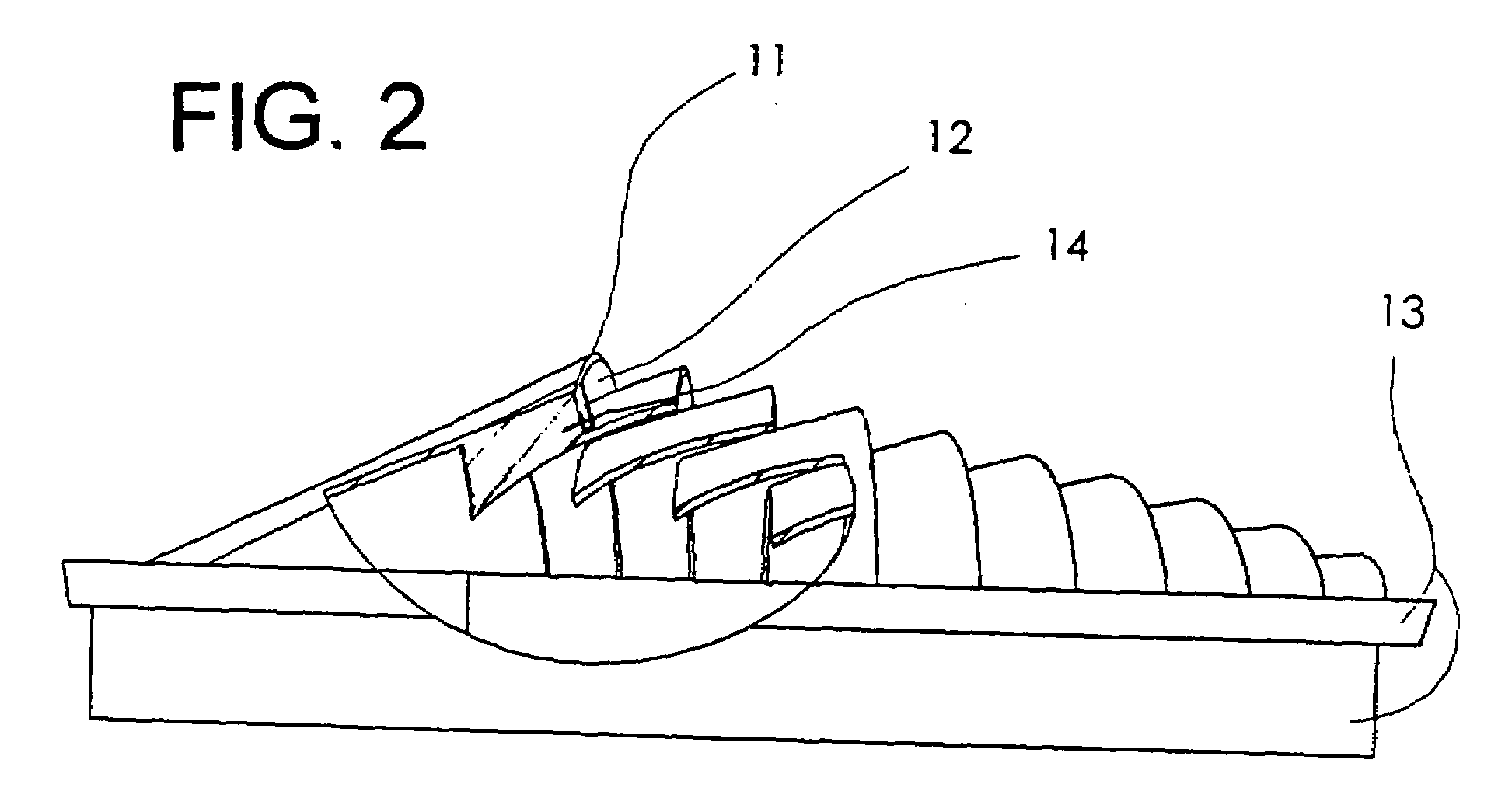Electrostatic filtered eyewear
a technology of electrostatic filtering and eyewear, applied in the field of protective eyewear and glasses, can solve the problems of full head hoods, hot and uncomfortable, etc., and achieve the effects of improving the airflow characteristics of the goggle, high degree of particulate filtration, and increasing the filtration capacity without increasing the airflow resistance of the filter
- Summary
- Abstract
- Description
- Claims
- Application Information
AI Technical Summary
Benefits of technology
Problems solved by technology
Method used
Image
Examples
Embodiment Construction
[0037]Shown in FIG. 1 is an exploded view of a goggle air vent insert with electret filter. The electret filter insert is formed by molding urethane rubber (Stevens Urethane, Nine Sulivan Road, Holyoke, Mass. 01040-2800), or silicone rubber (GE Silicones of General Electric Company, Waterford, N.Y., 12188), 1,3,5,7 that has been doped with Al2O3, SiC, MgO, SnO2, +Mg, graphite, or Al particles around an electret filter 4 such as Filtete™, 3M Construction and Home Improvement Markets Division, Box 330533, St. Paul, Minn. 55133-3053. The baffles interior 1, and exterior 7 can be designed to optimize the heat transfer by thickening the baffles near the goggle frame thermal contacts 3, 5 and forming fins in the baffles. The filter inserts 1, 5 can also be formed out of metals such as Mg or Al for their properties of high thermal conductivity and are lightweight. One of the design variations is to form the filter insert with a high conductivity interior material baffle 2 or screen 9 and h...
PUM
 Login to View More
Login to View More Abstract
Description
Claims
Application Information
 Login to View More
Login to View More - R&D
- Intellectual Property
- Life Sciences
- Materials
- Tech Scout
- Unparalleled Data Quality
- Higher Quality Content
- 60% Fewer Hallucinations
Browse by: Latest US Patents, China's latest patents, Technical Efficacy Thesaurus, Application Domain, Technology Topic, Popular Technical Reports.
© 2025 PatSnap. All rights reserved.Legal|Privacy policy|Modern Slavery Act Transparency Statement|Sitemap|About US| Contact US: help@patsnap.com



